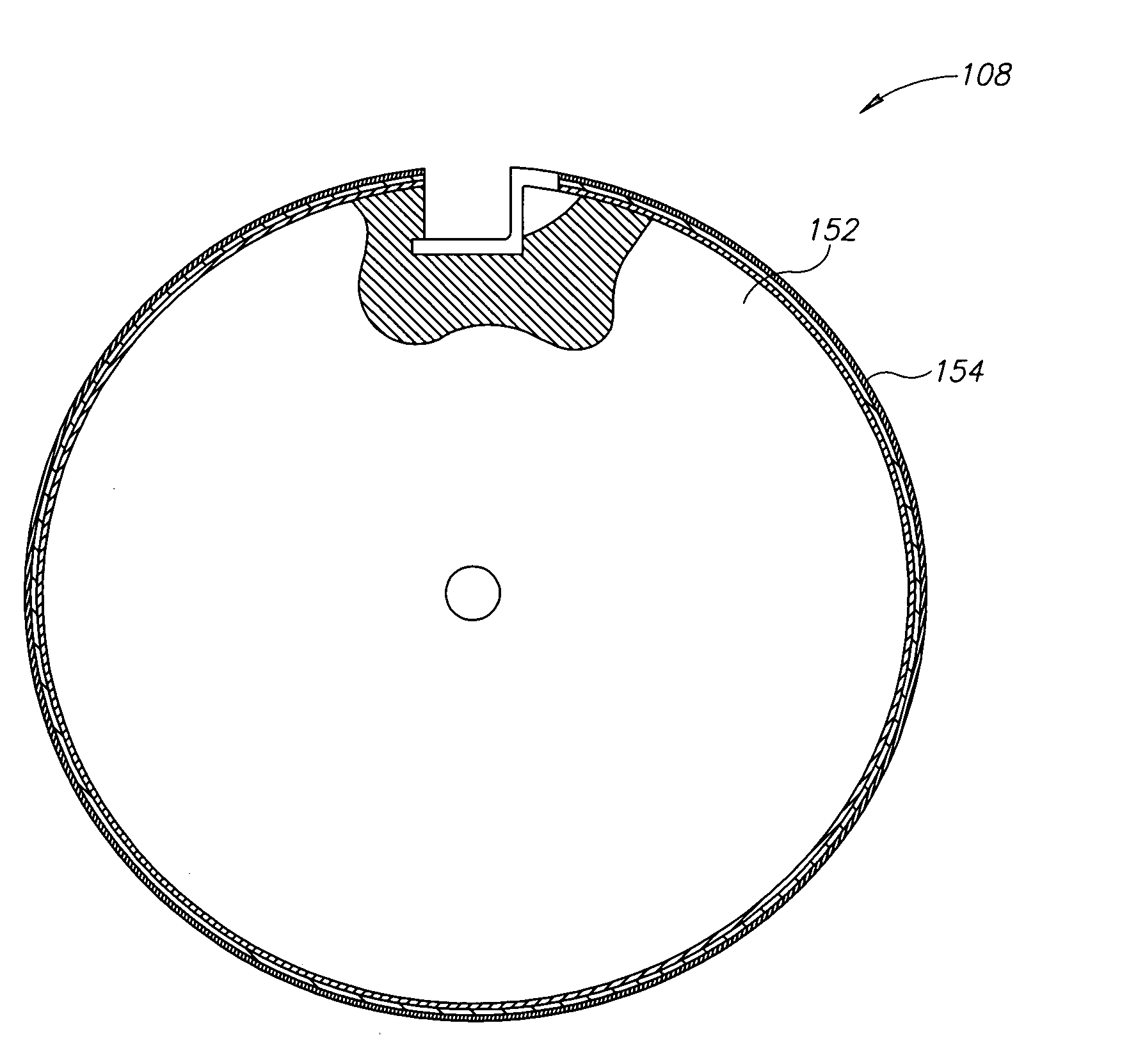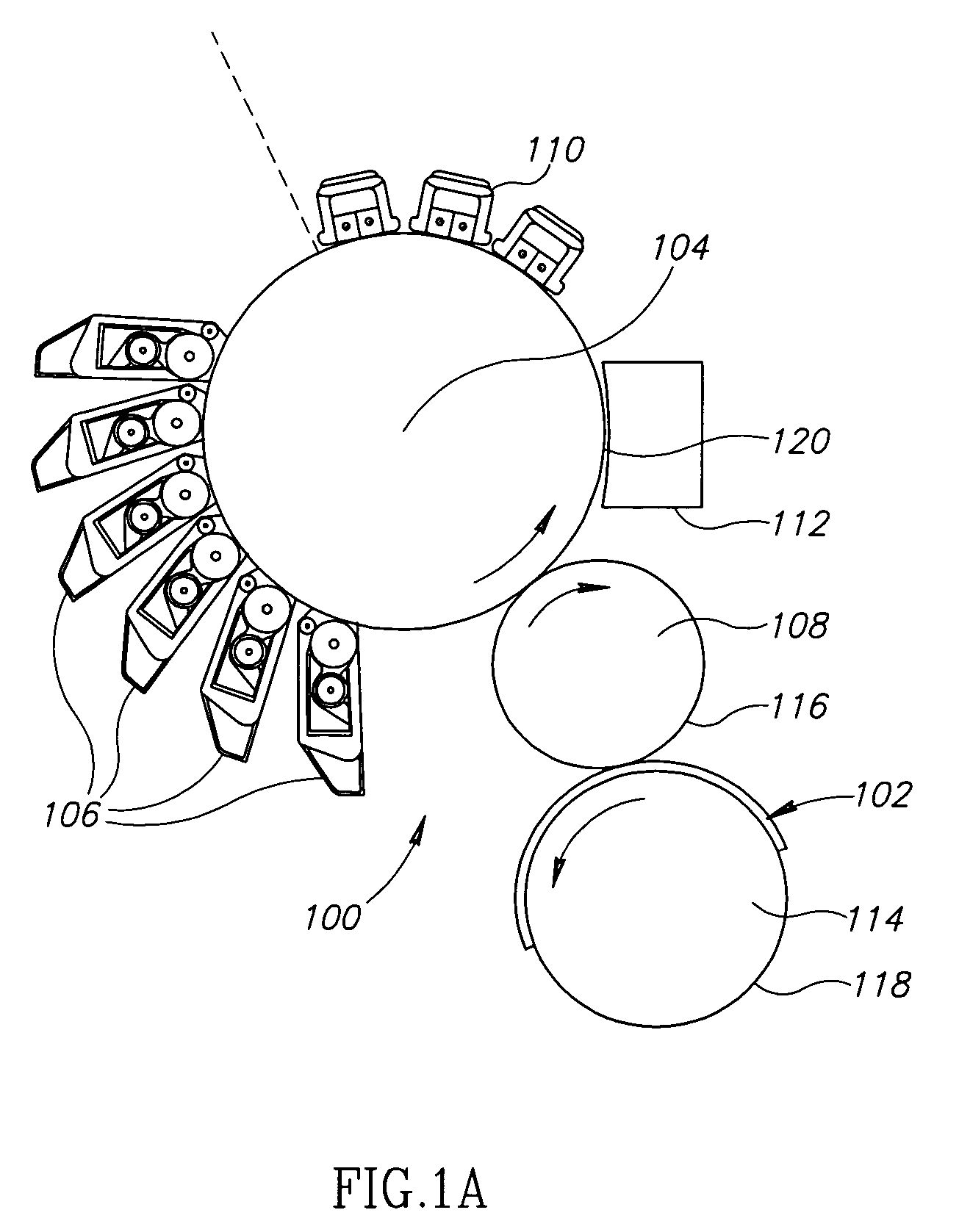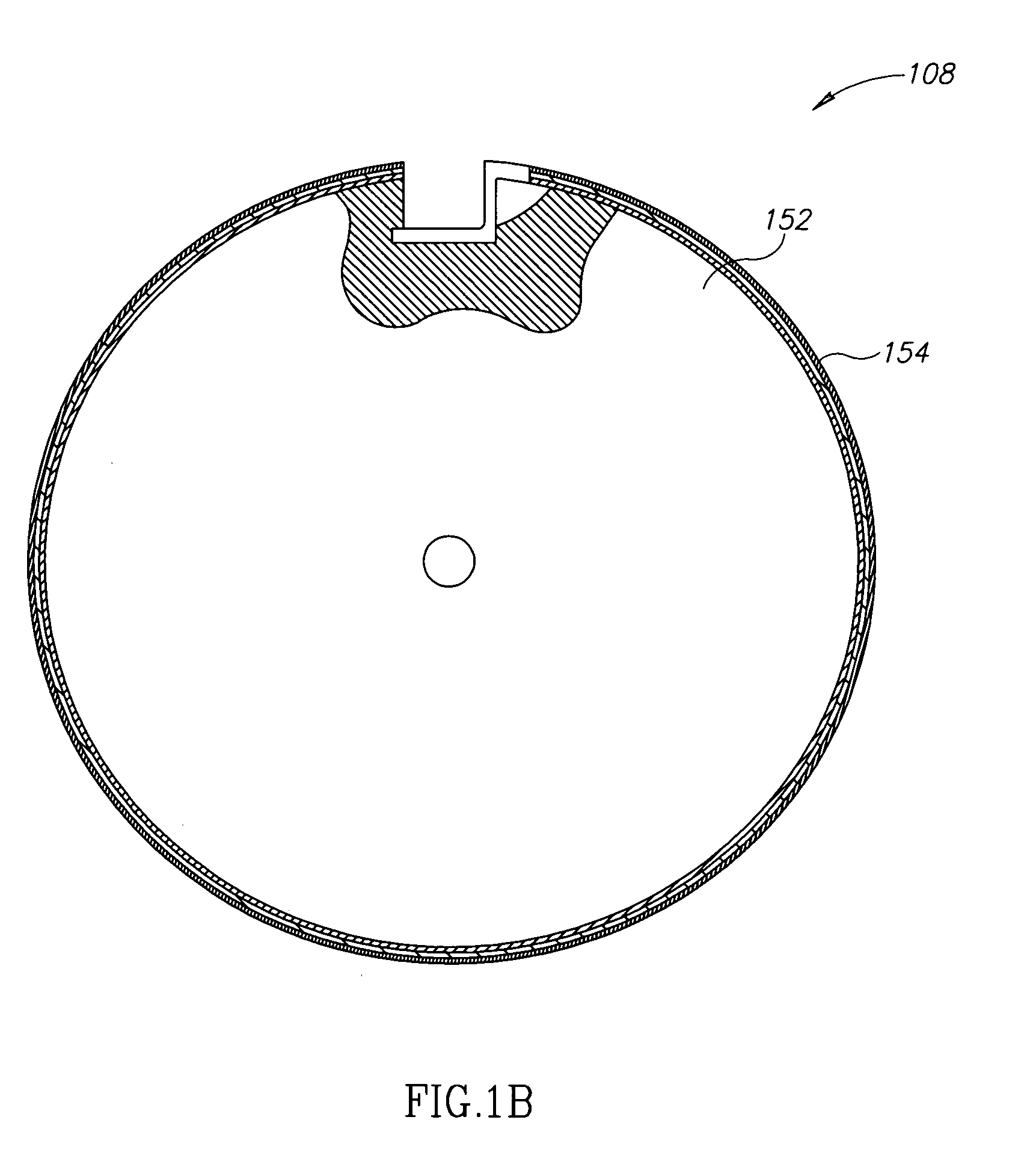Print blankets for use in electro-statographic printing and methods of using same
- Summary
- Abstract
- Description
- Claims
- Application Information
AI Technical Summary
Benefits of technology
Problems solved by technology
Method used
Image
Examples
Embodiment Construction
Exemplary Print Blanket Embodiments
[0028] Referring to FIG. 1A, a basic representation of a print engine 100 is shown, in accordance with an exemplary embodiment of the invention. In an exemplary electro-statographic printing process, a photo imaging plate (“PIP”) 104 or photoreceptor is given a uniform charge by at least one charge unit 110. This uniform charge is selectively discharged to form a latent electrostatic image by, for example a light beam shown as a dashed line, which cans across the PIP as it rotates in the direction shown. The selective discharging on the PIP forms a latent image that corresponds to an image which is to be printed by print engine 100. Liquid toner is optionally discharged from at least one binary image developer (“BID”) 106 which adheres to the appropriately charged areas of PIP 104, thereby developing the latent image. In some exemplary embodiments of the invention, the liquid toner is comprised of at least pigmented toner particles (comprising a ...
PUM
 Login to View More
Login to View More Abstract
Description
Claims
Application Information
 Login to View More
Login to View More - R&D
- Intellectual Property
- Life Sciences
- Materials
- Tech Scout
- Unparalleled Data Quality
- Higher Quality Content
- 60% Fewer Hallucinations
Browse by: Latest US Patents, China's latest patents, Technical Efficacy Thesaurus, Application Domain, Technology Topic, Popular Technical Reports.
© 2025 PatSnap. All rights reserved.Legal|Privacy policy|Modern Slavery Act Transparency Statement|Sitemap|About US| Contact US: help@patsnap.com



